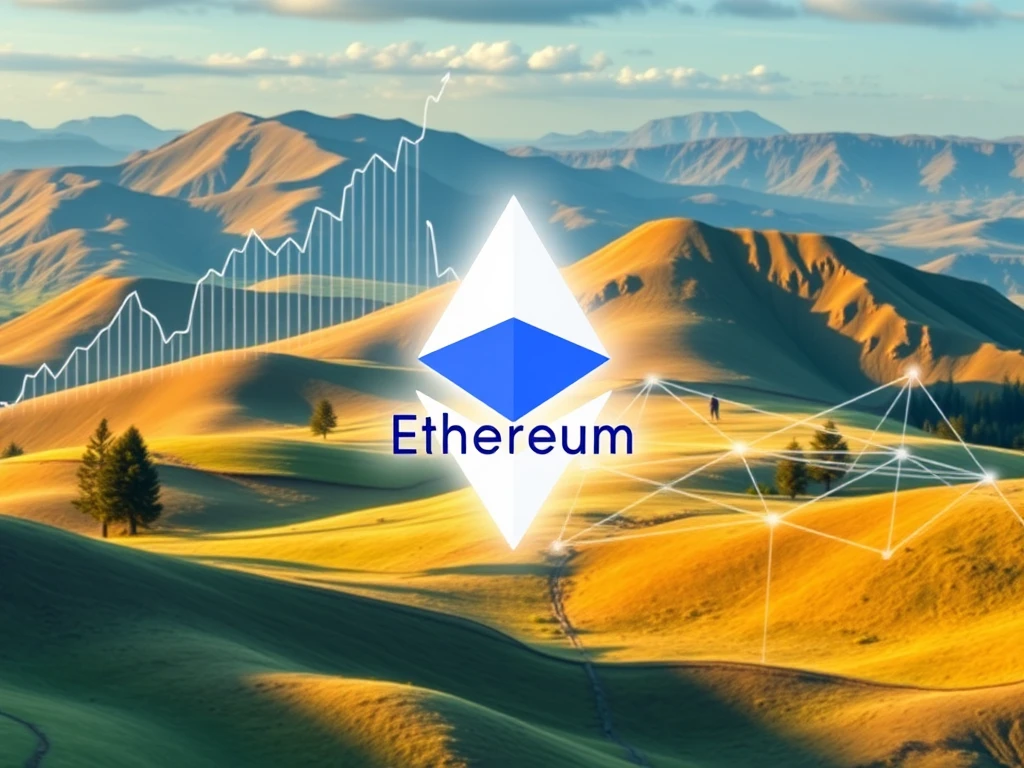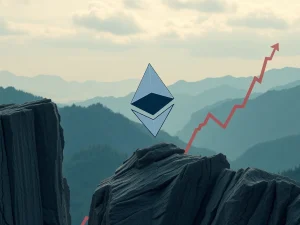Remarkable Ethereum Price Strength Backed by Robust Futures and Network Growth

Are you an investor keeping a close eye on the crypto market? While Bitcoin and other altcoins have seen recent sell-offs, Ethereum price has shown surprising resilience. Despite facing resistance around the $2,700 mark, ETH has notably outperformed the broader crypto market cap over the past month. This suggests underlying strength, but what exactly is supporting this performance?
Decoding ETH Futures Data Signals
To understand trader sentiment around Ethereum, looking at ETH futures markets is crucial. Even during a recent period where ETH dropped by 9% and saw $159 million in bullish leveraged positions liquidated, the futures market remained relatively calm. The annualized premium for 2-month ETH futures stayed close to 6%. In neutral market conditions, a premium between 5% and 10% is considered healthy, indicating that sellers expect standard compensation for delaying settlement. This stable premium, despite price volatility, suggests that professional traders are not overwhelmingly bearish on ETH’s near-term prospects.
Surge in Ethereum Network Activity
Beyond just price and futures, the health of the Ethereum network activity is a key indicator. While some express concern about declining interest in decentralized applications (DApps) across the board, Ethereum’s ecosystem shows significant growth, particularly on its scaling layers.
Consider these points about network fundamentals:
- Ethereum continues to dominate the Total Value Locked (TVL) landscape, holding over 54% of the market share.
- Leading Layer-2 solutions built on Ethereum add another significant portion, bringing the total Ethereum ecosystem TVL to more than four times that of its closest competitors combined.
- Crucially, Layer-2 scaling solutions are now processing over 15 times the number of transactions compared to the Ethereum base layer (L1). This massive increase in activity on L2s demonstrates the network’s ability to scale and handle growing demand, even if L1 fees remain a challenge for some users.
Comparing Ecosystem Strength: Ethereum vs. Solana
Critics sometimes point to competitors like Solana, which saw increased activity during the recent memecoin surge. However, a closer look at fee generation reveals a different story about sustainable value capture for token holders.
Let’s compare the fee dynamics over a recent 30-day period:
Top 4 DApps (30-day fees):
- Solana: ~$356 million generated by DApps
- Ethereum: ~$169 million generated by DApps
Network Fees (30-day fees):
- Solana Network: ~$48.5 million collected by the network
- Ethereum Network: ~$38.3 million collected by the network
While Solana’s top DApps generated more fees, the Solana network itself captured a smaller percentage of those fees compared to Ethereum. Ethereum’s fee structure, especially with the increasing reliance on Layer-2s, appears to result in a larger portion of value flowing back to the network and potentially benefiting ETH holders through mechanisms like fee burning (though not explicitly detailed in the source text, this is a known mechanism). The fact that some Solana projects regularly sell treasury reserves funded by fees can also create downward pressure on SOL’s price, a dynamic less pronounced in the Ethereum ecosystem where value capture is more aligned with the base layer token.
Investor Sentiment and Future Outlook for ETH
Despite the positive data points, some Ethereum investors feel frustrated by the price’s inability to break key resistance levels and a perceived lack of distinct competitive advantages following recent network upgrades. However, the fundamental growth in Ethereum network activity, particularly the successful adoption and scaling provided by Layer-2 solutions, significantly strengthens the ecosystem.
This underlying strength in network fundamentals and stable ETH futures data act as crucial support. While macroeconomic factors like global recession risks and trade tensions remain potential headwinds that could push the Ethereum price lower (potentially towards the $2,400 level), the robust ecosystem growth and market structure reduce the likelihood of ETH significantly underperforming the broader altcoin market in such a scenario.
Conclusion: Why Ethereum’s Foundation Looks Solid
In summary, while short-term price movements can be volatile, a deeper dive into ETH futures data and Ethereum network activity reveals compelling reasons behind ETH’s recent relative strength. The stable futures premium indicates professional market confidence, and the explosion of transactions on Layer-2 solutions highlights the network’s successful scaling efforts. Combined with its continued dominance in TVL and a potentially more favorable fee capture mechanism compared to some rivals, these factors provide a solid foundation for the Ethereum price, cushioning downside risk and positioning it favorably within the altcoin landscape.









